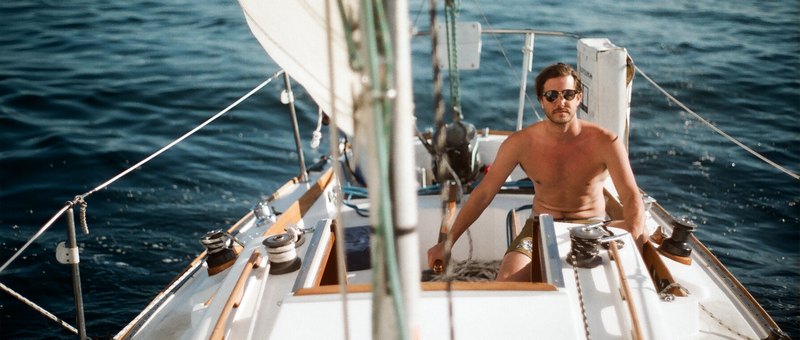Phone: (301) 352-5738
Email: info@CoastalClimateControl.com
Office | Warehouse:
1598 Whitehall Road, Suite D
Annapolis, Maryland 21409
12v air-conditioning-when cool is not hot
 It seems that there's an ongoing quest in some circles for the holy grail of boating comfort: 12 volt air conditioning. Yet few seem to fully appreciate the benefits of the more practical, but far less complex and substantially less expensive alternative: 115v AC air conditioning powered by a DC source through an inverter. Many boats these days already have inverters installed, and if not, there's a wide range of inexpensive models available that are suitable for powering small air conditioners.
It seems that there's an ongoing quest in some circles for the holy grail of boating comfort: 12 volt air conditioning. Yet few seem to fully appreciate the benefits of the more practical, but far less complex and substantially less expensive alternative: 115v AC air conditioning powered by a DC source through an inverter. Many boats these days already have inverters installed, and if not, there's a wide range of inexpensive models available that are suitable for powering small air conditioners.
This post will focus on small air conditioning systems that are suitable for sleeping cabins or for small boat applications. With a small unit, the DC current draw is low enough that they can usually be powered by an engine alternator whenever the engine is running, as well as from the batteries when required. Of course, any sized air conditioner can be powered by batteries through an inverter, it is just a matter of practicality.
To better understand the differences between the two concepts, some comparisons are shown below between the Climma Compact 4,200 Btu 115v AC unit and the Dometic Cuddy II 3,500 Btu 12v DC model.
Both models' Btu output is specified at ABYC rating conditions, and both come from well respected manufacturers. There are other 12v DC compressor-based units available, but either their specifications and documentation give insufficient information, or they are not suitable for small marine applications.
- Component complexity - The Climma 115v AC unit is comprised of rugged, well tested, off-the-shelf components that are made by the gazillion and are very familiar to service technicians. In contrast, the Cuddy II 12v DC components are highly specialized, especially the compressor that requires sophisticated electronics in order to operate.
- Power draw - The Climma 115v 4,200 Btu unit requires an inverter with minimum power output of 600 watts, but a 1,000 watt model is recommended. Even taking into account losses through the inverter, the Climma unit uses only slightly more power than the much smaller Cuddy II DC system. Both systems use small 12v DC sea water pumps drawing one amp or less, with the Climma model powered through its own AC to DC converter.
- Power supply wiring - The Cuddy II 12v unit requires large gauge battery cables to handle the heavy current demand and to prevent excessive voltage drop. The further the unit is from the battery connection, the larger the cables have to be. Now, battery voltage is never constant (unless there is a charger operating), and as the battery voltage falls, the current draw has to increase to compensate and keep the power level steady (remember, watts = volts x amps).This increase in current results in increased voltage drop through the cables, which in turn speeds up the rate of discharge from the battery in an accelerating voltage death spiral.
Installing large DC cables is typically both tricky and expensive, with the cable alone costing in the region of $75 for a 15" wiring run. The Climma 115v unit, however, requires only small gauge AC wiring between the inverter and the unit, and this is easy to run, inexpensive, and its size is not dependent on the length of run from the inverter. Inverters can be mounted close to the battery in order to keep large cabling to a minimum, with the 115v supply to the unit being unaffected by falling battery voltage. - Heat/Cool - The Climma 115v unit is available as cool only or as a reverse cycle heat-pump that produces great heat down to a water temperature of 40F. The Cuddy II, along with most other DC units, is only available as a cool-only unit.
- Starting surge - The Cuddy II boasts of having a reduced compressor starting load, but with these dinky sized units the starting surge really is insignificant, and is nothing to be overly concerned with.
- Cost - Now we're down to the nitty-gritty. DC air conditioning systems come with a hefty price tag. The Dometic Cuddy II retails for just under $5,500.00, and that's just for the unit and control, without the pump, cables, hoses, ducting, etc.! By contrast, the Climma Compact 4,200 with control retails for less than half of that, under $2,000, and just slightly more with reverse-cycle heat. If the vessel doesn't have an inverter already, a good 1,000 watt pure sine wave model will cost less than $300, and with the added benefit that it can also be used to power other 115v AC devices like a blender, microwave, coffee maker, etc.
So there you have it. 12v air conditioning may at first seem to be the coolest thing around, but then not so hot when price, performance, and practicality are taken into consideration.
By accepting you will be accessing a service provided by a third-party external to https://coastalclimatecontrol.com/






